Where did Sanctuary come from?
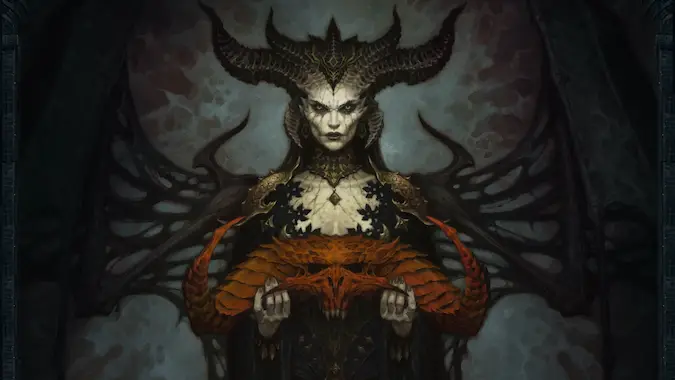
In Diablo 4, more so than any other game in the series, the world in which the Diablo universe is set, Sanctuary, is almost a character with a full backstory and personality all its own. We’ve covered the lore of the Diablo games at length, but even the brass tacks of where we are and why we’re doing what we’re doing is worth its own discussion.
Because Sanctuary is not a natural occurrence. It was born out of the power of a long dead god, used by an Angel and a Demon as a desperate hope to shape a world where an endless war could be escaped. Instead, it became yet another battleground.
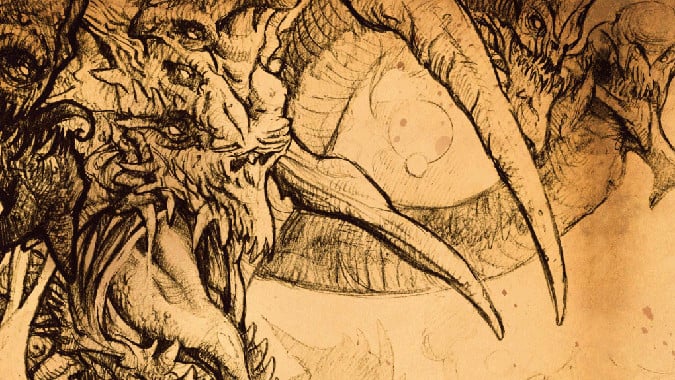
Before the world of Sanctuary was born
In the time before existence as we understand it was only Anu. Anu was all things — every pure and noble concept, every foul and wicked desire — all things, both good and evil, resided within Anu. But Anu was alone in the cosmos.
Grasping all that was foul, corrupt, and malevolent in its being, Anu tore the cosmos apart. In the place of one singular being there now were two. One being, a warrior of pure diamond, kept the name Anu for himself. The other called itself Tathamet — a seven headed dragon of raw evil, chaos, and madness. These beings could not abide one another, and so, did battle.
Both died. Their death throes and the shock of their conflict left behind scars. The realm where both met their end became Pandemonium, a blasted wasteland of eternal combat between primordial forces. Much of the plane calcified around something called the Eye of Anu — a fragment of the being who had proceeded both the Diamond Warrior Anu and Tathamet.
The Diamond Warrior’s spine became the central arch of a new realm created around it, which we would come to call the High Heavens. A group of ethereal and radiant beings were born, beings the people of Sanctuary call Angels. Meanwhile, from the corpse of Tathamet was born the Burning Hells, and the corpse’s seven heads tore free from its body, becoming the first of the Demons. Three of these are now known as the Prime Evils — Mephisto Lord of Hatred, Ba’al Lord of Destruction, Diablo Lord of Terror — and four are Lesser Evils — Belial Lord of Lies, Azmodan Lord of Sin, Duriel Lord of Pain, and Andariel Maiden of Anguish.
These two opposing factions of Angels and Demons continued the animosity of Anu and Tathemet, and thus began the Eternal Conflict.

The Birth of Sanctuary
After so much time, there were those on both sides of the conflict who’d had enough of eternal war. Lilith, daughter of the Prime Evil Mephisto, and Inarius, an Archangel who once served as an advisor to the Angiris Council, the ruling body of Heaven, were both sickened with the senseless carnage and destruction of the Eternal Conflict before they met each other.
They recruited like minded Demons and Angels and used those unlikely allies to launch an attack on the Pandemonium Fortress. They breached the Worldstone Chamber where the Eye of Anu — now called the Worldstone — lay waiting for them.
They used that Worldstone to make a new world. They then brought the Worldstone itself into that world, hiding it within a pocket of reality. Neither Heaven nor Hell could find it, and the followers of the two defectors dubbed the world so created as a Sanctuary. A safe haven for them to escape the Eternal Conflict.
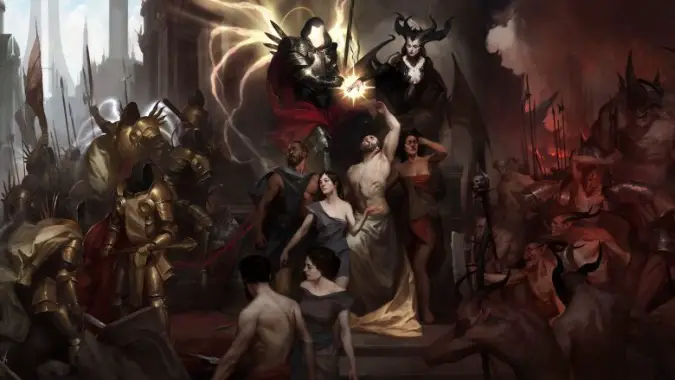
From the Nephalem to humanity
On Sanctuary, Lilith began the second stage of her plan by seducing Inarius and giving him a son.
She named this child Linarian, a name crafted from those of his progenitors. Linarian was a very special child, as were the children born after him. Sanctuary slowly filled with these powerful children, known by various names over the years — the Ancients, the Firstborn — but to their parents they were the Nephalem, and they were both beloved and feared, none more so than Linarian.
Soon the rebellious Angels and Demons came to Inarius with their fear that the sheer power of their own Nephalem children would somehow attract the attention of the Heavens and the Hells. Inarius shared some of their concerns as the idea that the Nephalem might well be more powerful than their forebears concerned him. But even he was surprised at the call to exterminate their own children, and called for a period of reflection.
Lilith didn’t want to take the chance and decided to kill all of the Demons and the Angels rather than allow them to try and carry out their plan. Enraged, but still bound to Lilith, Inarius chose to banish her using the power of the Worldstone, and then used the stone’s power on the children, causing them to diminish with each new generation. Instead of the cosmically powerful beings of the first generation, their children and grandchildren were born as, well, humans.
For thousands of years, those humans spread across Sanctuary, making nations, living their lives, while Inarius hid among them and brooded.
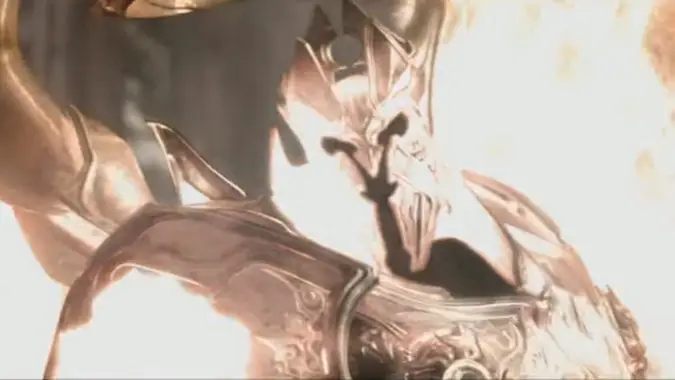
The Eternal Conflict comes at last to Sanctuary
But, despite everything, Demons found Sanctuary. Some blame the ancient Mage Wars of the Vizjerai, as they had discovered the use of magics that could summon Demons. Baffled by humans and their dual Angelic and Demonic natures, the Prime Evils decided to try to corrupt them and enlist this untapped force in the Eternal Conflict, thinking it would provide their side with enough power to defeat Heaven.
Soon a cold war between the Demons and Inarius began, which we would come to call the Sin War. Lucion, the son of Mephisto, created the Triune faith, which used flattering versions of the three Prime Evils as gods. Mephisto became Mefis, Spirit of Love. Diablo was known as Dialon, Spirit of Determination. And Ba’al was called Bala, Spirit of Creation. Inarius responded with a religion based around himself, the Cathedral. During this conflict, the power of the Worldstone weakened, and Lilith returned to Sanctuary. She implanted herself into the life of slowly growing Nephalem Uldyssian ul-Diomed, and even though he turned against her she still achieved her goal — Sanctuary was saved, the Angels of the High Heavens and the Demons of the Burning Hells agreed to leave the world alone, and Inarius ended up trapped in Hell in the prisons of Mephisto.
Unfortunately, no one on Sanctuary remembers any of this, as Uldyssian was forced to sacrifice himself to reset the power of the Worldstone, essentially erasing himself and the events of the Sin War from the minds of all humanity. But while humanity may not remember the Sin War, the legacy of it remains, providing the catalyst of most of the events we’ve played through in the Diablo franchise.
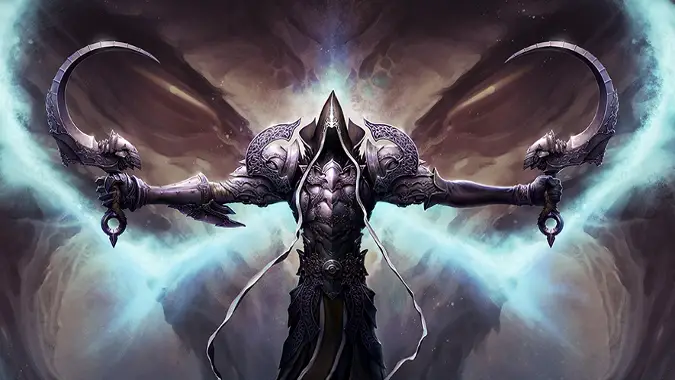
The legacy of the Sin War on Sanctuary
To list just a few consequences of the Sin War:
- The vote of the Angiris Council on whether or not to exterminate humanity at the end of the Sin War led to discord between the Council. Imperius The Archangel of Valor would blame Tyrael the Archangel of Justice for voting against killing the whole of humanity.
- Despite Uldyssian’s sacrifice and the people of Sanctuary forgetting him, his brother Mendeln founded the Priests of Rathma at this time, creating the Necromancers as they exist today. Rathma was the name taken by Linarian after the Worldstone was used to banish his mother and weaken the Nephalem descendants.
- The treaty between Heaven and Hell that established that neither side would attempt to intervene on Sanctuary led to the Dark Exile, where Mephisto, Ba’al, and Diablo were cast out of the Hells by the four Lesser Evils.
- This led to the creation of the Horadrim by the Archangel Tyrael, which led to centuries of Tyrael interfering in Sanctuary’s affairs. He was inspired to do this by the sacrifice of Uldyssian.
- The Church of Zakarum formed in the vacuum left behind by the sudden disappearance of the Cathedral of Light and Inarius, and Deckard Cain would later wonder if the Zakarum were founded due to visions of Uldyssian’s sacrifice granted to the monk Akarat.
- The Horadrim tracked down the exiled Prime Evils and imprisoned them in Soulstones. But in time, those Soulstones led to the corruption of the Zakarum by Mephisto, the thousand years of torture for Tal Rasha of the Horadrim as Ba’al destroyed the Soulstone meant to trap him and the willing sacrifice of the first head of the Horadrim, who used his body to attempt to confine Ba’al forever. It failed.
- The Horadrim Monastery built atop the last Soulstone containing Diablo’s imprisoned essence would end up disturbed centuries later by Archbishop Lazarus of the Zakarum, sent by Mephisto’s corrupted Que-Hagan to find and free the Lord of Terror. His ultimate success led to the events of Diablo and Diablo 2.
- Inarius and Lilith’s theft of the Worldstone would lead Malthael, the Archangel of Wisdom, to study the void where it had been, a process that led him to encounter the souls of dead humans from Sanctuary that were floating around the place it had been. This caused him to develop the interest in Death that led him to try and embody that force, which ultimately led to his use of a corrupted Soulstone to kill all humans. He nearly succeeded. 90% of humanity died before Malthael was stopped, leading to the fractured and crumbling state of the world we see in Diablo 4.
The world we log into when we play Diablo 4 is one where much suffering has befallen the people of Sanctuary. Humans have no idea of the greater cosmic war Sanctuary was made to escape. They have no clue as to the machinations of Lilith or Inarius, and they have been tormented and killed in vast numbers because of it. Now, they’re clinging to any hope of survival. Can the heroes we create possibly help them? Well, only one way to find out.
Please consider supporting our Patreon!
Join the Discussion
Blizzard Watch is a safe space for all readers. By leaving comments on this site you agree to follow our commenting and community guidelines.
 @MatthewWRossi
@MatthewWRossi



